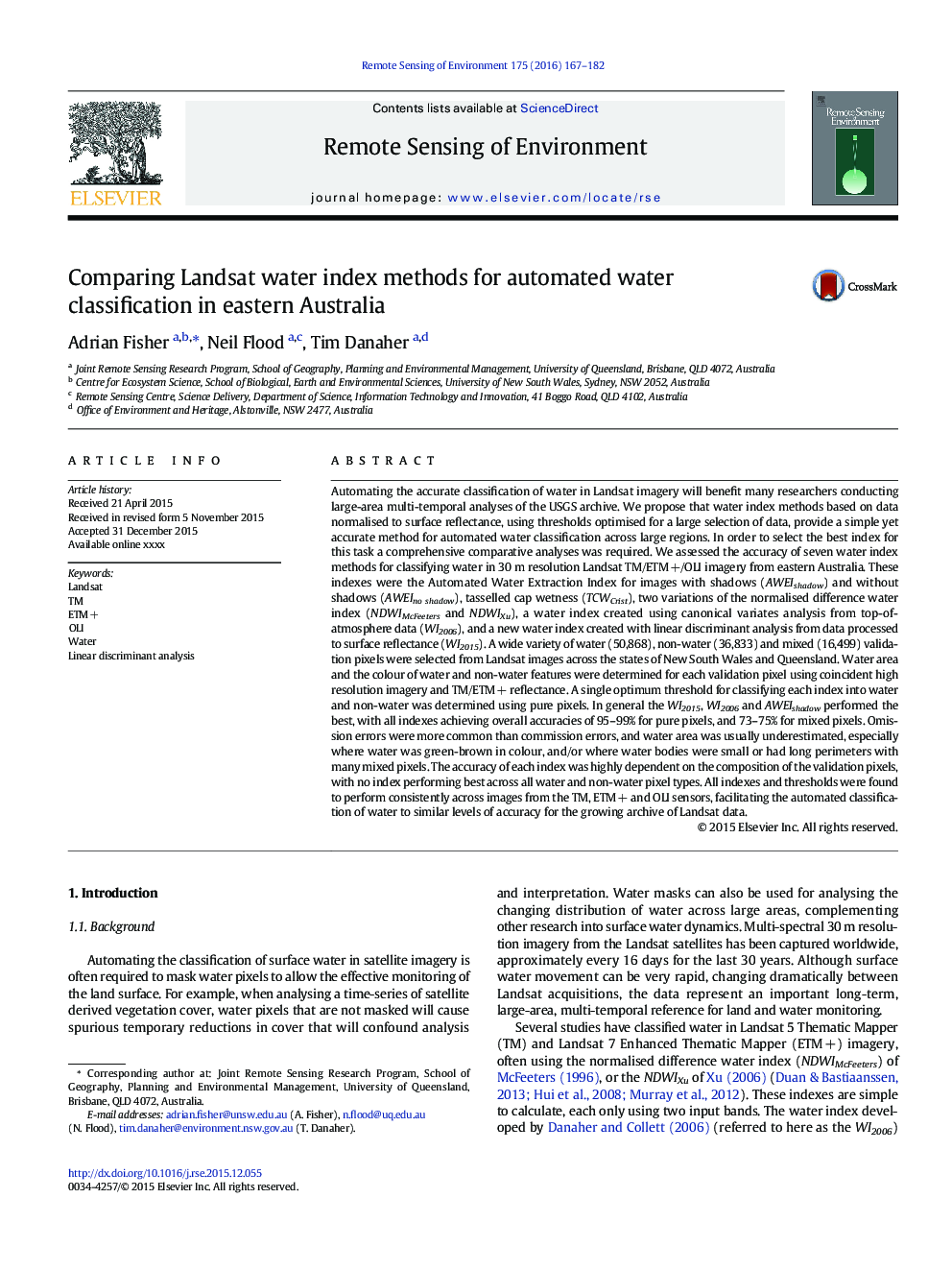| کد مقاله | کد نشریه | سال انتشار | مقاله انگلیسی | نسخه تمام متن |
|---|---|---|---|---|
| 6345616 | 1621225 | 2016 | 16 صفحه PDF | دانلود رایگان |
عنوان انگلیسی مقاله ISI
Comparing Landsat water index methods for automated water classification in eastern Australia
ترجمه فارسی عنوان
مقایسه روش های شاخص لندست آب برای طبقه بندی آب اتوماتیک در شرق استرالیا
دانلود مقاله + سفارش ترجمه
دانلود مقاله ISI انگلیسی
رایگان برای ایرانیان
موضوعات مرتبط
مهندسی و علوم پایه
علوم زمین و سیارات
کامپیوتر در علوم زمین
چکیده انگلیسی
Automating the accurate classification of water in Landsat imagery will benefit many researchers conducting large-area multi-temporal analyses of the USGS archive. We propose that water index methods based on data normalised to surface reflectance, using thresholds optimised for a large selection of data, provide a simple yet accurate method for automated water classification across large regions. In order to select the best index for this task a comprehensive comparative analyses was required. We assessed the accuracy of seven water index methods for classifying water in 30Â m resolution Landsat TM/ETMÂ +/OLI imagery from eastern Australia. These indexes were the Automated Water Extraction Index for images with shadows (AWEIshadow) and without shadows (AWEIno shadow), tasselled cap wetness (TCWCrist), two variations of the normalised difference water index (NDWIMcFeeters and NDWIXu), a water index created using canonical variates analysis from top-of-atmosphere data (WI2006), and a new water index created with linear discriminant analysis from data processed to surface reflectance (WI2015). A wide variety of water (50,868), non-water (36,833) and mixed (16,499) validation pixels were selected from Landsat images across the states of New South Wales and Queensland. Water area and the colour of water and non-water features were determined for each validation pixel using coincident high resolution imagery and TM/ETMÂ + reflectance. A single optimum threshold for classifying each index into water and non-water was determined using pure pixels. In general the WI2015, WI2006 and AWEIshadow performed the best, with all indexes achieving overall accuracies of 95-99% for pure pixels, and 73-75% for mixed pixels. Omission errors were more common than commission errors, and water area was usually underestimated, especially where water was green-brown in colour, and/or where water bodies were small or had long perimeters with many mixed pixels. The accuracy of each index was highly dependent on the composition of the validation pixels, with no index performing best across all water and non-water pixel types. All indexes and thresholds were found to perform consistently across images from the TM, ETMÂ + and OLI sensors, facilitating the automated classification of water to similar levels of accuracy for the growing archive of Landsat data.
ناشر
Database: Elsevier - ScienceDirect (ساینس دایرکت)
Journal: Remote Sensing of Environment - Volume 175, 15 March 2016, Pages 167-182
Journal: Remote Sensing of Environment - Volume 175, 15 March 2016, Pages 167-182
نویسندگان
Adrian Fisher, Neil Flood, Tim Danaher,
